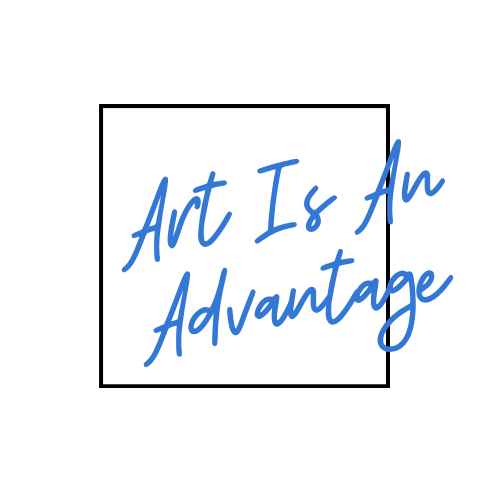
by Rebecca Sciullo | Feb 2, 2024 | Productivity
Business Interruptions are a Normal Part of Your Art Business
Running a solo business, like many art ventures, can come with unexpected interruptions that disrupt your daily plans. Whether it’s a technical problem stopping your progress or a personal project needing attention, these interruptions can throw off your workflow and make it harder to get things done. However, having a plan to deal with interruptions can help you handle these challenges and get back on track, which is crucial for keeping up your momentum and making the most of your time.
Life Happens
This week, I faced two situations that interrupted my business – first, a technical glitch, and then a positive development around a vacation that needed urgent planning. It got me thinking about this topic, and I wanted to share some ideas for handling business interruptions and getting back to being productive.
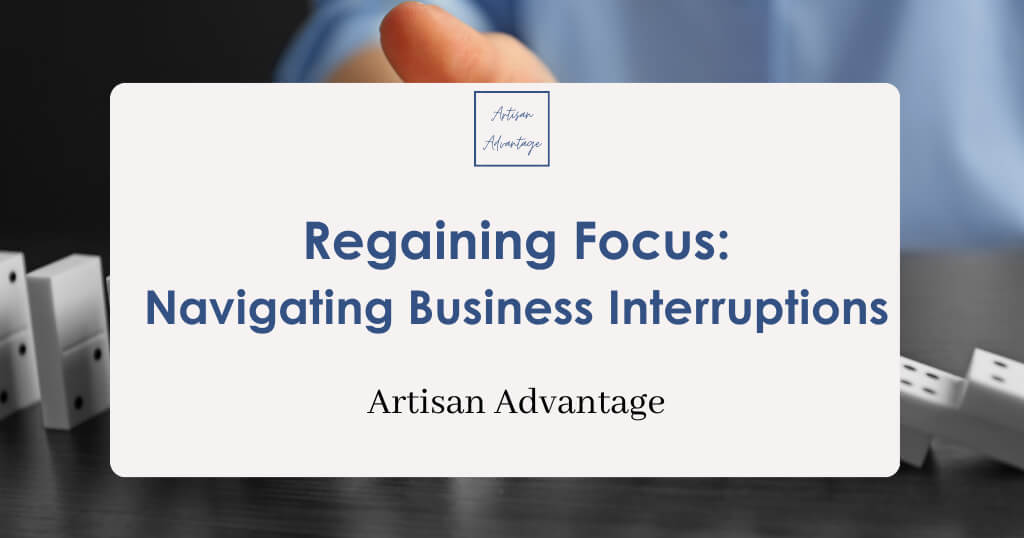
The Impact of Interruptions
When running a solo business, you must manage many tasks at once. Interruptions, like technical issues or personal projects, can be especially frustrating, as it can feel some days like it’s impossible to get anything accomplished. You might feel overwhelmed and unsure about what to do next, especially if you don’t have an assistant to help with some of your business tasks.
Strategies for Regaining Focus
Here are some strategies to regain focus when life or technical issues slow you down.
1 – Assess the Situation
When something interrupts your business, take a step back and determine how serious it is. Decide what needs to be dealt with first by considering what’s most urgent or essential. Doing this will help you focus your efforts and get back on track faster. Are you getting distracted by things that require your attention at that moment, or are you being pulled simply because the issue has presented itself?
For example, my technical situation was time-sensitive as the issue was causing my website to be offline. So, it was an important issue to fix, and I had to take time to solve it immediately. However, I often get personal calls from my family and friends that are less urgent, and I’ve learned strategies for blocking my time to avoid those types of things over the years so they don’t take me off track.
2 – Seek Help
It’s okay to ask for help when you need it. Whether getting advice from other business owners online or hiring someone to help with specific tasks, don’t hesitate to ask for support. YouTube can be an excellent place to find quick help for technical how-to videos. There are also communities like the Artisan Advantage Facebook Community where you can ask questions and get help from fellow artists. Find out resources that you need regularly and keep them handy.
3 – Set Realistic Goals
Be honest about what you can get done in a certain amount of time, especially when balancing personal projects and business tasks. Break big tasks into smaller ones to make them easier to tackle. Setting achievable goals will help you stay on track even when things get hectic.
4 – Stay Flexible
Managing the situation when unexpected things happen is essential for solo business owners. Be ready to adjust your priorities if something comes up. Staying flexible will help you deal with obstacles and keep your business running smoothly. My personal project involved travel and required quick decision-making and a few lengthy phone calls. Since I knew I had to table my business plans that morning to shift into travel planning mode, I looked at my schedule and decided when to make up that time. That helped me move forward with some peace of mind, knowing I would eventually return to my business activity.
5 – Take Care of Yourself
Remember to take care of yourself, especially during stressful times. Take breaks when needed, do things that help you relax, and don’t be afraid to ask for help if you feel overwhelmed. Taking care of yourself will help you stay productive and focused.
It Helps to Have a System
Even though running a solo business can be challenging, having a plan for dealing with interruptions can help you stay on track. By setting up a routine for how you work and when you do specific tasks, like marketing your business, you can get back to business quickly when something comes up.
Navigating interruptions as a solo business owner can be challenging, but with the right strategies, you can stay focused and keep your business moving forward. Remember to assess the situation, ask for help when needed, set realistic goals, stay flexible, and take care of yourself. With these tools, you can overcome any obstacles that come your way and keep your business running smoothly.
Would you like to join the Artisan Advantage Facebook Community? While artists can post questions at any time, we also have a live weekly Q&A where I take questions related to your art business.
Join the Facebook Group here.
Do you need a plan of action? Get your 12-Month Action Planning Guide here.

by Becky Sciullo | Jan 8, 2022 | Resources

Happy New Year! We’re a week into the New Year, and hopefully, you are motivated and excited about the year to come.
Sometimes the end of the year is so hectic that it is helpful to sit down and review upcoming plans for the next twelve months after the start of the year. I have an annual subscription to Michael Hyatt’s Full Focus Planner. Being a subscriber, I receive regular emails with advice for planning, goal setting, and more. This week I received an email about the concept of an annual preview that might be helpful for your visual art business. If you’d like to learn more about conducting an annual preview, you can listen to this episode of the Lead to Win Podcast.
Do an Annual Preview for Your Visual Art Business
Some of the things you can do to preview your art business for 2022 include:
List your biggest wins. Wins could include reaching sales goals, holding a fruitful show, receiving an award, or anything else you consider a success this year.
Make a list of all the things that worked for you this year. Then, make a list of things that didn’t work. Is there any particular social media platform that is working better than another? Are there activities that are panning out into opportunities or sales for you? What do you want to keep doing in 2022? Likewise, which actions should you reconsider or stop doing?
Did you have written goals in 2021? Have your reviewed and rewritten them for 2022? If not, do it now.
Review your calendar for the upcoming year. Map out the significant events and milestones you need to hit during the year. Make sure you list out all events, exhibitions, and deadlines to map out your preparation.
Consider your daily rituals. What can you do at the beginning and close of every day to keep your business on track?
Consider your ideal workweek. Can you map out what you should do every week and when you should do it to keep your business on track and reach your goals? For example, you can map out studio time, marketing time, and any other activity that will get you closer to your goals.
Doing this review and giving thought to pre-planning will set you up for more likely success in the year to come.
Check out the Full Focus Planner
If you haven’t figured it out by now, I am a big fan of the Full Focus Planner. If you are looking for a planning system, I recommend that you give it a look.
Stay in Touch
I’d love to stay in touch this year. Join my weekly newsletter here.
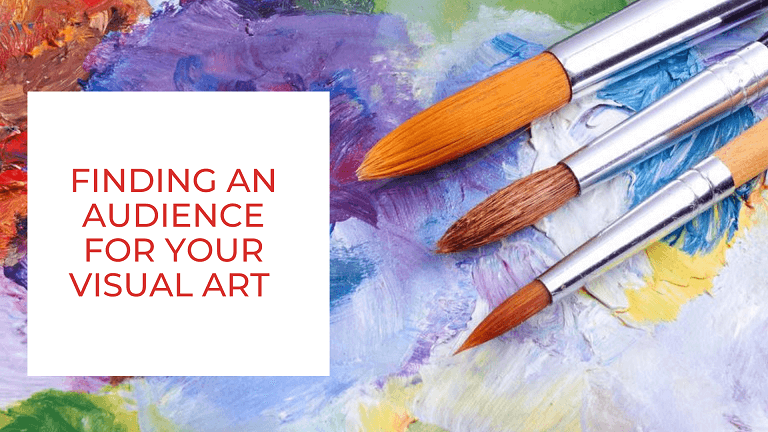
by Becky Sciullo | Nov 9, 2021 | Audience, Events
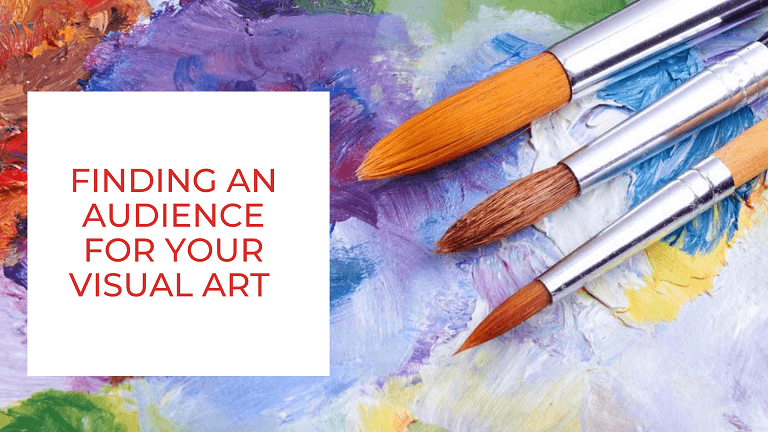 In Build a Dynamic Web Presence, learn the importance of identifying an audience for your visual art business. Figuring out the component can be one of the most challenging pieces of your the marketing puzzle. Attend a new webinar, Finding an Audience for Your Visual Art, to learn more about how to do this for your business.
In Build a Dynamic Web Presence, learn the importance of identifying an audience for your visual art business. Figuring out the component can be one of the most challenging pieces of your the marketing puzzle. Attend a new webinar, Finding an Audience for Your Visual Art, to learn more about how to do this for your business.
Learn more here.
by Becky Sciullo | Apr 23, 2021 | Audience
If You’re Selling to Everyone, You’re Selling to No One.
If you’ve ever worked in sales, you might have heard the adage, “If you’re selling to everyone, you’re selling to no one.” This is true with just about every product, including your art. In Build a Dynamic Web Presence, I stress the importance of making sure you are identifying a target audience for your artwork. This step is critical in setting up your art marketing system.
Helping The Bluegrass Painter was pretty easy as far as an audience goes. But, that is not always the case. Finding an audience comes easier to some artists than others. This is one of my favorite things to help artists figure out. While there are many different tactics and strategies that you can do to find your audience, here is an overview of the process that we go through.
 How to Find an Audience For Your Art
How to Find an Audience For Your Art
Step 1 – Assess Where You Are
Take an honest review of your current situation. This assessment includes everything from the kind of art you create to who has purchased work in the past. Other things to consider would be what people have told you about your work. Does it elicit emotion? Does it speak to them? What does it say? All of these things are part of the assessment.
Step 2 – Do Your Research
Once you take an assessment, you start to consider who might be attracted to your work based on this information. Then, you do some research which can be as easy as doing a Google search.
Step 3 – Experiment with a purpose.
Based upon what you’ve learned in Steps One and Two, start to take action. Try something. Experiment with a purpose means that you are taking action based upon what you’ve learned. But, you’re not quite sure what the results will be. It’s okay to try, and it’s okay if it doesn’t work. Guaranteed, you will learn something in the process.
Step 4 – Build upon what you learn.
Did the experiment work? Great, do more of it. If it didn’t work – why not? What can you do differently next time?
Do this process repeatedly until you start to identify the places that might fit to show you work and the people who might love it.
Get Help Finding Your Audience
If you’d like more information about finding your audience, join my email newsletter here.
by Becky Sciullo | Dec 9, 2020 | Events
Free Presentation! Use Blogging to Build Your Art Business
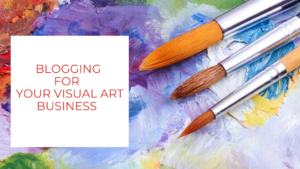 Registration is now open for Blogging for a Visual Art Business on January 16, 2021.
Registration is now open for Blogging for a Visual Art Business on January 16, 2021.
Start the new year off right. Attend this free presentation about how to use blogging to create an effective marketing system for your visual art.
This presentation uses my personal experience and real-life examples to outline a system any visual artist can use. The information is relevant for many popular web platforms such as WordPress, Weebly, Squarespace, or FASO. Learn how to consistently share work with an audience across various marketing channels such as social media and email marketing using an easy to use blogging platform as the driver for your business.
My goal is for you to gain a new enthusiasm for building a web presence, whether you are starting from scratch or improving upon an existing website. Blogging to Build an Art Business offers advice for starting and maintaining this system in a manageable way.
Reserve your spot at the link below.
Blogging for a Visual Art Business
January 16, 2021
10:00 am EST

